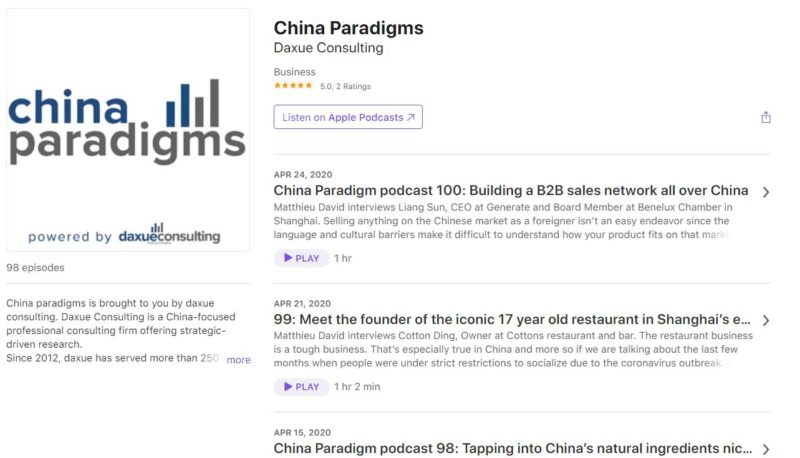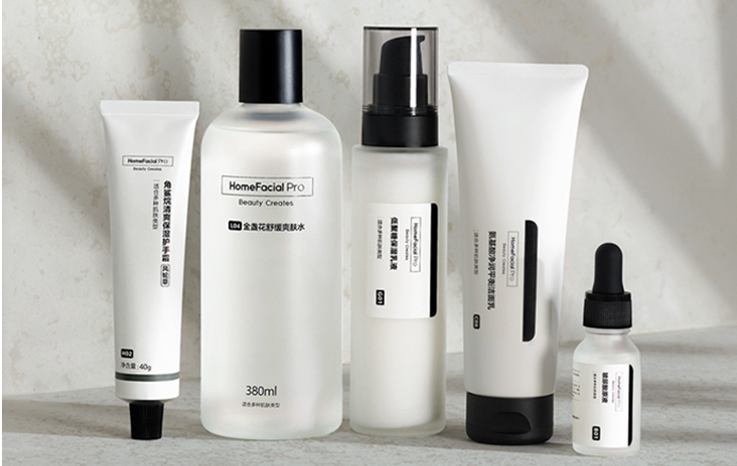HomeFacial Pro, or HFP in short, is a Chinese skin care brand founded in 2014 by Guangzhou Danke Internet Technology Co Ltd. It takes up a 0.9% brand share in the skin care market in China. The name “HomeFacial Pro” means professional skin care that can be enjoyed at home. It is one of many rising Chinese cosmetics brands. What makes this C-beauty brand unique is it’s precise targeting of Chinese “skintellectuals” via scientific, ingredient-oriented marketing.
Click to download our report on HomeFacial Pro’s China market strategy
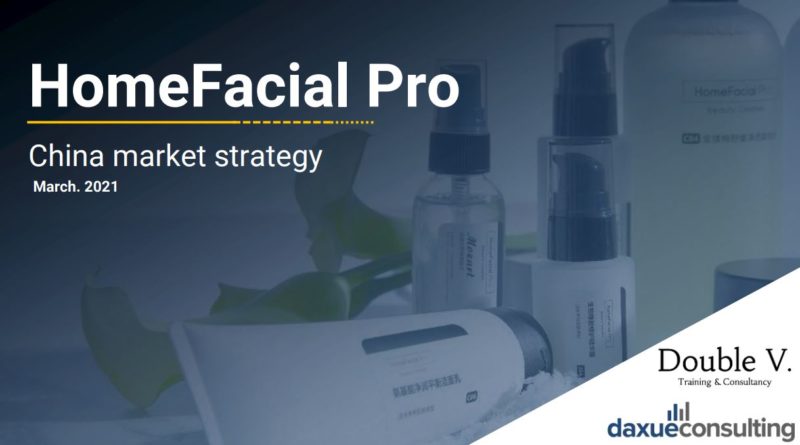
From concept to packaging, the brand shares a lot of similarities with The Ordinary, a brand from DECIEM. Hence, customers frequently compare these two brands.
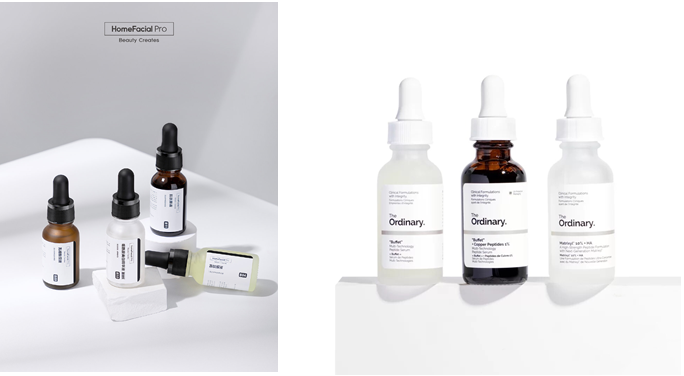
Image Source: HFP Weibo (left) & DECIEM Official Little Redbook (right), HFP and The Ordinary share a lot of similarities from concept to packaging.
Products named after molecules to respond to the trend of an ingredients-oriented purchase decisions
On HomeFacial Pro’s site that the parent firm collaborates with its Japanese Laboratory to research and develop products. In China, the brand has R&D centers in Beijing and Guangzhou. It offers a range of skin care products, including face masks, cleansers, essences, toners, lotions, eye care, and body care. The brand’s signature products are face masks and serums.
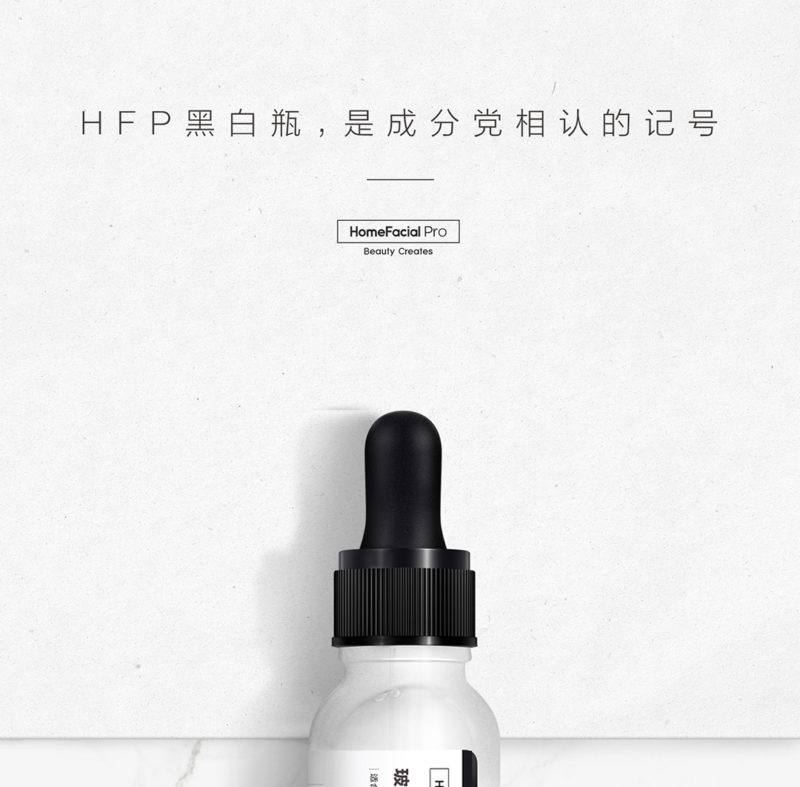
Image Source: homefacialpro.com, HFP’s black-and-white product packaging delivers a minimalist brand image, and its products are specifically target at ingredient-oriented customers.
As Chinese skin care consumers grow increasingly sophisticated, they tend to make purchase decisions based on a product’s ingredients. In China, there is a term used to describe consumers who are ingredients-oriented, called “Ingredient Group” or “Skintellectuals” (成分党). HomeFacial Pro specifically targets this group of customers. Unlike dominant brands which stick to traditional product names such as “Advanced Night Repair Concentrates” or “Youth Activating Concentrate”, HFP names it flagship serum products after organic molecules, for instance, Oligopeptide serum (寡肽原液) and Nicotinamide serum (烟酰胺原液). Other products are named in the “molecule + function” form.
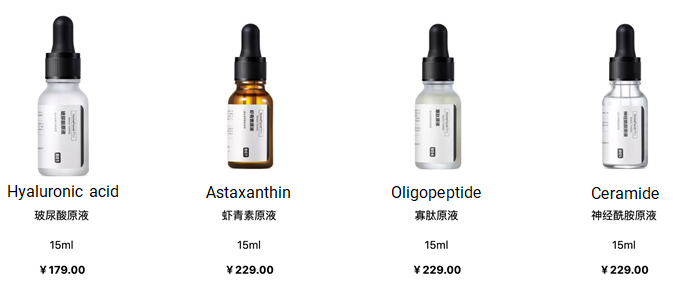
Image Source: homefacialpro.com, HFP’s serums are named after molecules, which targets more sophisticated skin care consumers. Whereas their other products are named after the molecule and the function, which is more user friendly.
The benefit of this naming method is that it removes the guesswork so sophisticated consumers can fathom what exactly are they buying. However, this method works for well-known ingredients such as Nicotinamide and Hyaluronic acid (玻尿酸) but not the little known ingredients such as Astaxanthin, Oligopeptide, and Squalane. Even some have heard of the ingredient, they might not be familiar with the functions. Thus, customer education is crucial to the effective use of this naming method.
What are the most successful Chinese beauty brands? Get insights from Daxue Talks
Similarly, The Ordinary follows the same naming method. The difference between the two brands is that the Chinese one does not highlight the concentration, or percentage, of the main ingredients on the packaging. This is because The Ordinary positions itself as high concentration at affordable price, whereas HomeFacial Pro claims that high concentration does not mean better performance since everyone has different tolerance levels.
Pricing integrity matches the transparency of products
As a mass-market skin care brand, HomeFacial Pro’s price is affordable. This makes sense if we think about its minimalist packaging and honest product strategy. Moreover, the facts that the brand is backed by an Internet technology company and benefited from starting online also lead to its affordability.
Over half of its products are priced under 200RMB. The premium line is priced at about 400RMB. Given that, it remains a doubt whether HFP’s prices are in its true form. If we compare the prices of The Ordinary with HFP based on the products using same ingredients, it’s found that HFP is priced higher than that of The Ordinary.
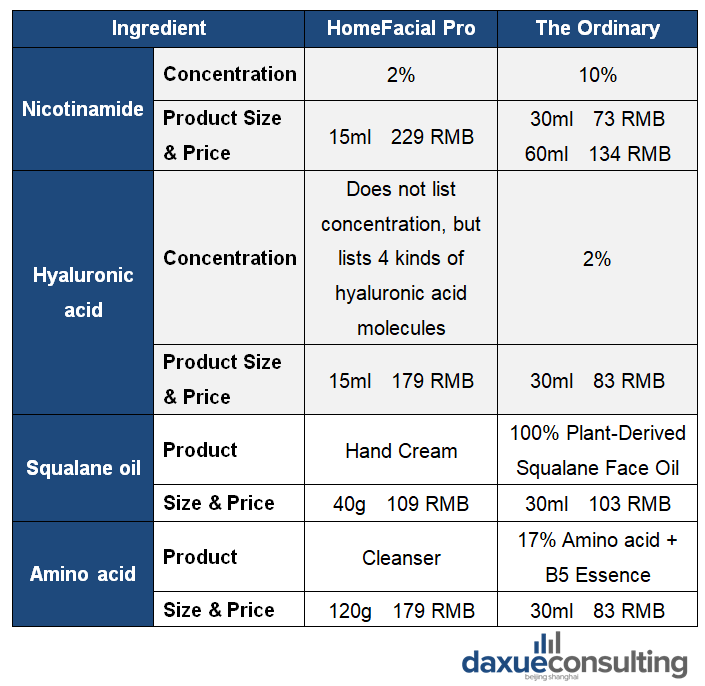
Data Source: Tmall, daxue consulting analysis, HFP’s price per unit (PPU) is higher than that of The Ordinary.
Focusing on content marketing for customer education
HomeFacial Pro signed the popular male idol Wang Yibo as spokesman of its signature serum line. The brand went further to produce merchandise for Wang Yibo’s fans, which integrated the brand’s physical features with Wang Yibo’s interests, leverage fans’ economy to the fullest extent.
Additionally, HFP also tried to retain the niche customer segment due to its positioning of a niche brand. It launched a paper magazine focusing on content about lifestyle and skin care to inspire new ways of life and reading.
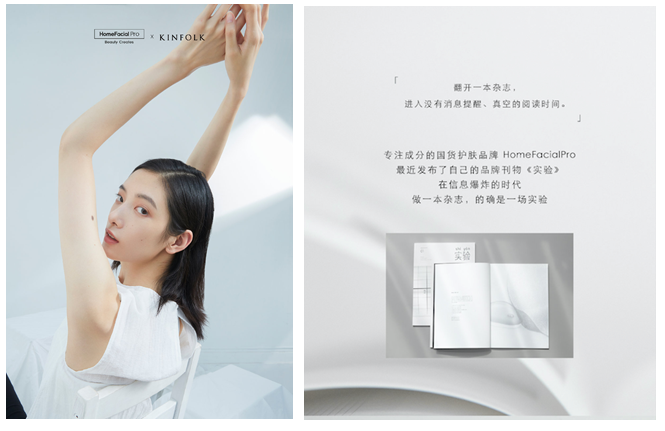
Image Source: HFP’s Weibo, HFP’s co-branding with KINFOLK (left) & HFP’s magazine (right), aiming to retain its niche customer segments while expanding to life aesthetics and creating brand feeling.
Other promotional tactics include, but not limited to, using band ambassadors, KOL endorsements, giveaways, and branded content. Home Facial Pro emphasizes branded content on social media, especially WeChat and Xiaohongshu. It intentionally promoted the effects of whitening and pore-minimizing, the two most-concerned skincare issues among Chinese customers. However, it’s been accused of excessive advertising and exaggeration, leading to negative perception.
According to Zhihu, some consumers even unsubscribed from WeChat official accounts that improperly promoted HFP. On the other hand, the unselective distribution of branded content with eye-catching and assertive taglines did improve HFP’s awareness, making it the eighth place in essence sales on Tmall and Taobao.
Reinforcing brand meaning and staying consistent
In terms of customer-based brand equity, it’s true that Home Facial Pro has managed to create the brand salience through excessive promotions. Given that, the challenges for HFP are two-fold. For those who were exposed to HFP’s content but then unsubscribed due to negative feelings, the challenge for HFP is to restore its image. Whereas, for customers who have entered the brand’s ecosystem, it’s of importance for HFP to reinforce its brand meaning among these customers. An ideal situation is that while HFP is reinforcing its brand meaning, it could hopefully attract new customers. Given the abovementioned, consistency is crucial to establish HFP’s customer-based brand equity. It will confuse the customers when HFP is expanding to become a minimalist brand standing for life aesthetics, but applied a pushy and rhetoric style of promotion.
See the strategies of other rising C-beauty brands in China
Listen to over 100 China entrepreneur stories on China Paradigms, the China business podcast
Listen to China Paradigm on Apple Podcast
